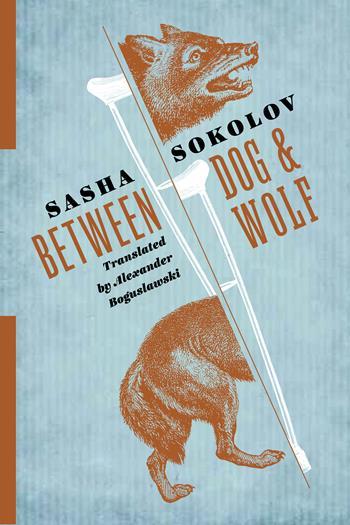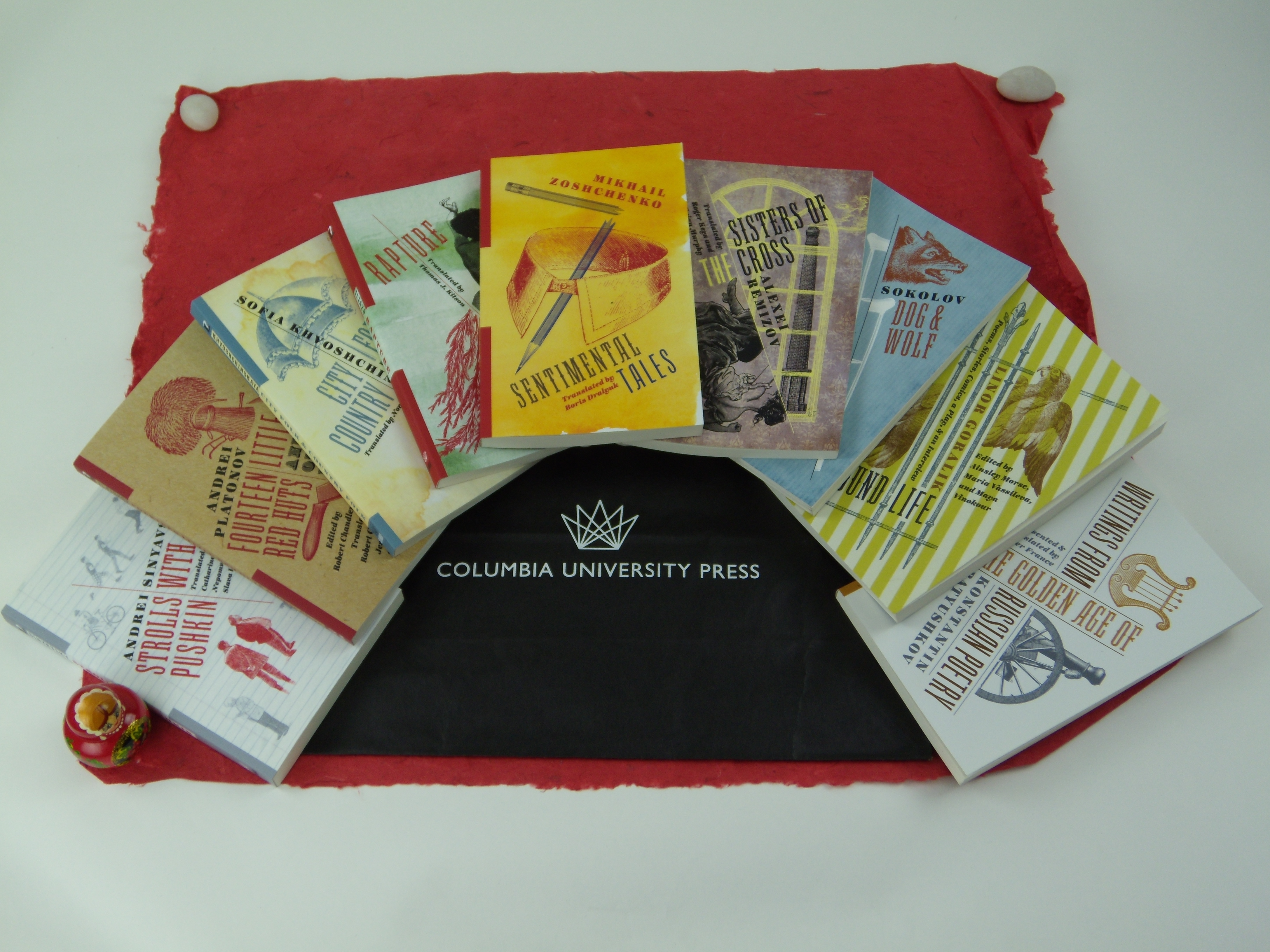Thursday Fiction Corner: Between Dog and Wolf in Translation
This post is a part of the inaugural week of the Russian Library, a new series that seeks to demonstrate the breadth, variety, and global importance of the Russian literary tradition to English-language readership through new and revised translations of premodern, modern, and contemporary Russian literature.
Enter the Russian Library Book Giveaway here
Welcome to the Columbia University Press Thursday Fiction Corner! This week Russian Library intern and Columbia Russian Literary Translation MA student Elaine Wilson delves into Alexander Boguslawski’s translation of Between Dog and Wolf.
Sasha Sokolov’s novel Between Dog and Wolf is intimidating in its complexity: time is non-linear, character names are inconsistent, register moves along a wide spectrum from peasant dialect to sophisticated, even Biblical style, and the language is filled with neologisms. It is highly intertextual, astoundingly rich in its reference to Russian literary tradition across the centuries. Space, time, life and death are all uncertain—rarely is any one of them clearly demarcated—and events are told and retold from differing perspectives. And that’s just the content.
The structure likewise poses a challenge: dialogue, monologue and third person omniscient narration coexist on the page with no breaks, no indentation, no typeset cues or even general conventions of reported speech, but rather flow freely along in a train of associative (and sometimes seemingly unassociated) thought. Sokolov’s writing style belongs in a category all its own, a genre Sokolov himself categorizes as somewhere between prose and poetry, or “proetry.” And speaking of poetry, there are plenty of poems throughout, too—complete chapters of poetry tucked among the “proetic” sections of the novel.
How can something like this find its voice in a foreign language? For a long time, publishers and translators asked themselves that very question. When the Russian version of the novel was first published in 1980, critics gave it a rather mixed reception, and many within the literary community—capable translators among them—balked at the idea of an English-language version, suggesting it could never be done.
And yet it could. Sokolov’s Between Dog and Wolf is being published in English for the very first time, and so the idea of the “untranslatable” returns to the realm of translation mythology. Or does it?
I am a student of translation. Russian into English literary translation, to be specific, and so I feel a personal kind of victory in the release of this novel, a sense of celebration in a triumph over apparently insurmountable linguistic odds. Yet for all my excitement I still wonder about the inevitable losses that occur when we bring a literary work from one language into another; in the back of my mind I can’t help but hear Nabokov denouncing the “sins” of our “queer world of verbal transmigration,”* crying out that all translation but for literal, scholarly renderings are false. (Though perhaps Nabokov would find the most egregious transgression of all to be the lack of exhaustive notes on the same page of the referenced text, an organizational decision specified by Sokolov himself.)
Nabokovian doubt on the value of translation aside, can translation of something like Sokolov’s convoluted work be done well? The novel is difficult, packed with myriad obstacles that translators don’t frequently face, much less all at once. Puns, peasant dialect, a general sense of disorientation—translator Alexander Boguslawski tackles these challenges by the best means possible: culturally conscious creativity, or what Philip E. Lewis calls “abusive translation.” When a translator must force an idea from a unique mode of expression in the source text into a new linguistic framework, the translator’s job is to convey sense and meaning while still communicating the uniqueness of the source form in the receiving language. Often what “works” in Russian won’t work in English, and so the translator needs to “abuse” the text, that is, creatively engage the receiving language so that it can carry the meaning, the humor/ irony/ sadness, etc. and the unorthodox medium of the source in its new linguistic code. Consider Boguslawski’s translation of the Russian dva sapoga para: “two boots of leather flock together.” This is a clever blending of the Russian subject and English idiomatic structure to convey the literal scene—two characters sharing a pair of boots—and the spirit of collaboration implied by the Russian proverb Sokolov uses to describe them. The Russian, literally “two boots are a pair,” folds into “birds of a feather flock together” to create an English-Russian proverbial hybrid.
Why not simply use the English idiom here? Wouldn’t the spirit of the proverb be enough to convey the characters’ sense of comraderie? A translator could take this easy way out, but more than just sounding trite, the imagery would be lost, deafening the line’s descriptive power in Russian. Boguslawki does not take the easy road, and thank goodness, for his solution is lovely: it retains the visual and sense of the Russian while infusing some “foreignness” into the English text, an “abuse” that works in service of conveying the character and style that we experience in Sokolov’s Russian.
So much for linguistic obstacles. What about literary density? Again, Nabokov’s cynicism echoes in the back of my mind: the translator of a text “must have as much talent, or at least the same kind of talent, as the author he chooses.”* Between Dog and Wolf is packed with references to past and modern Russian artists, particularly Pushkin, something which only a reader with comprehensive, arguably exhaustive knowledge of Russian literary tradition would understand. Careful Russian readers have trouble identifying everything that is layered within the story, so how can we expect anyone but the most meticulous scholar to identify these layers, much less translate such a text? Of course, Boguslawski’s friendly relationship with the author establishes him as the closest thing to a Sokolov specialist for this translation, but Nabokov’s standards still reach impossibly high; in the case of this extremely learned text, is anyone capable of translation? Or perhaps the “untranslatable” does not exist, but is it possible that scholarly translation and Nabokov’s towering footnotes are the only recourse? If so, are there “prerequisites” in literary pedigree for both translators and readers of these works?
To silence this existential questioning I could turn again to literary and translation theory for inspiration, but I don’t need to. A novel’s complexity notwithstanding, translation is ultimately a dialogue between cultures and an exchange of ideas. And even though things are certain to get left by the wayside as they move from one linguistic and cultural framework to another, the receiving language and audience still gain. Perhaps readers won’t or possibly can’t identify all that the author has folded into the text, but this is an invitation to study, to revisit the story and look closer.. No matter how deep the reader chooses to go, reading a text in translation is an entry point into another literary tradition and culture that was previously closed; exhaustive research can be nice, but ultimately we have reason to celebrate because one group has gained insight into another, and that is a beautiful thing.
*Nabokov, Vladimir, (August 4,1941). The Art of Translation. The New Republic.
Retrieved from https://newrepublic.com/article/62610/the-art-translation






